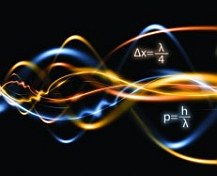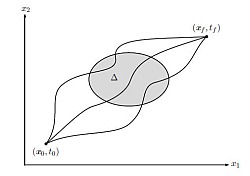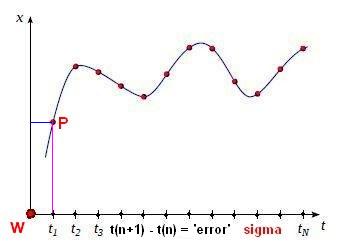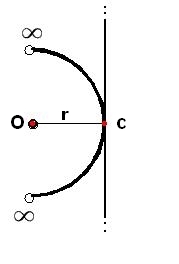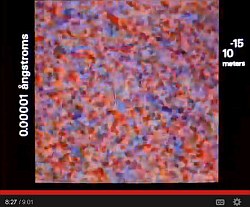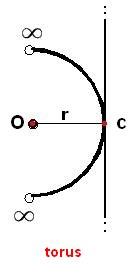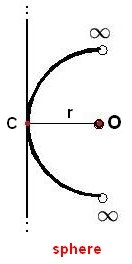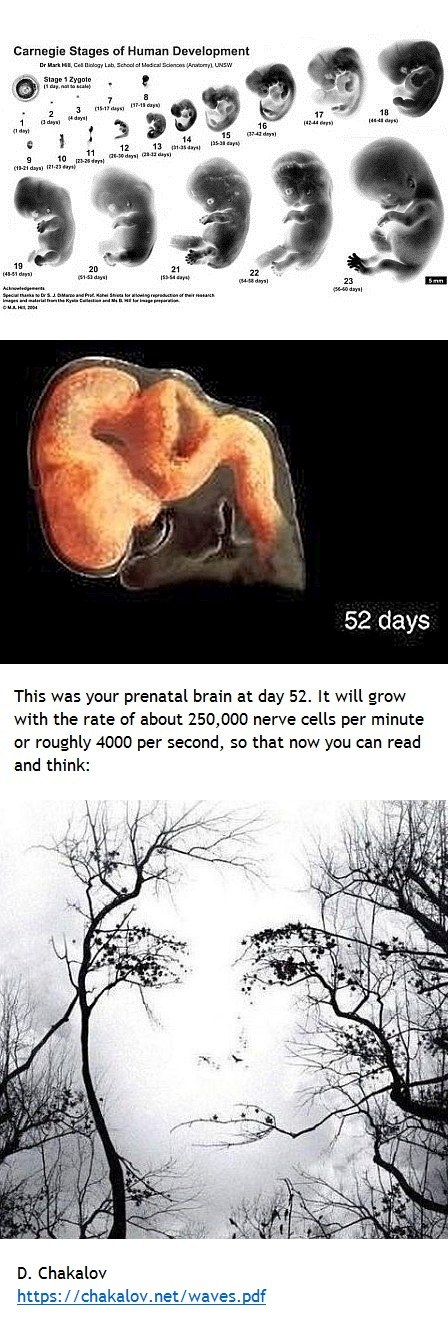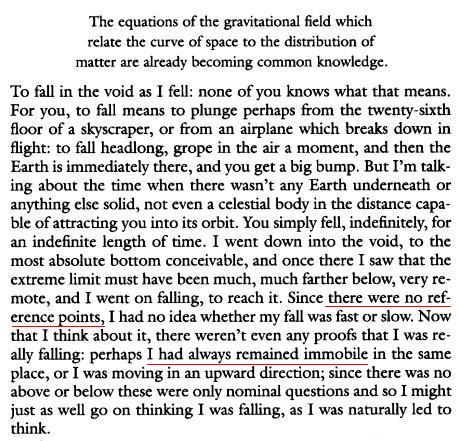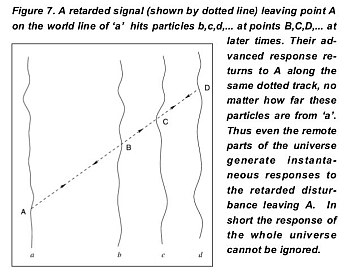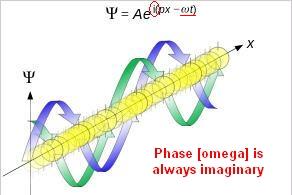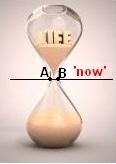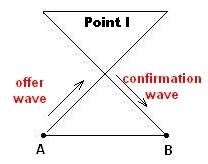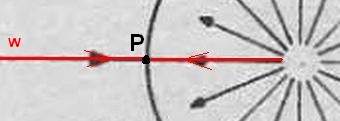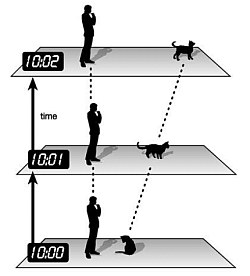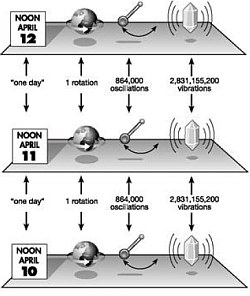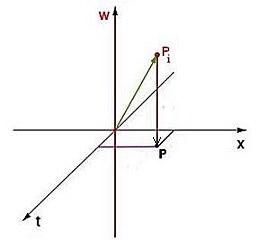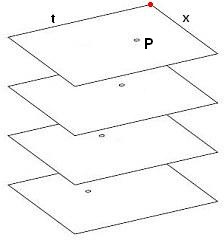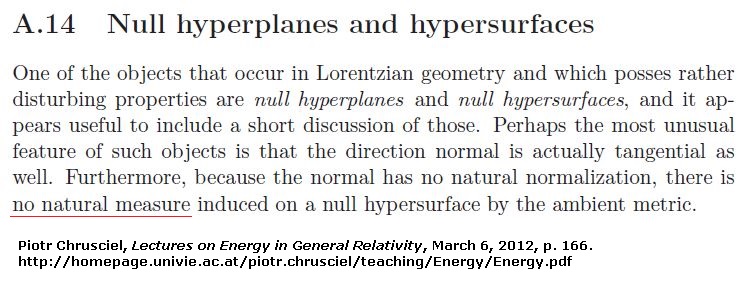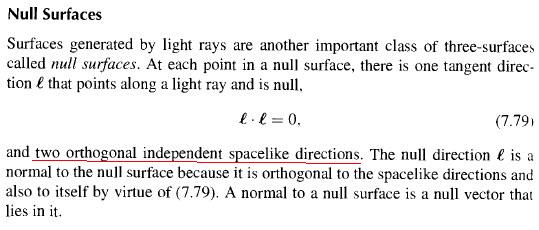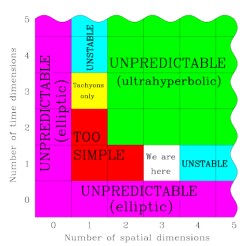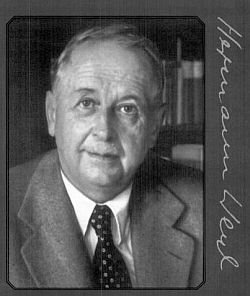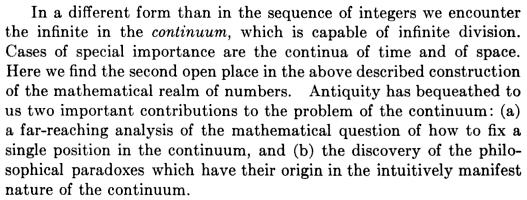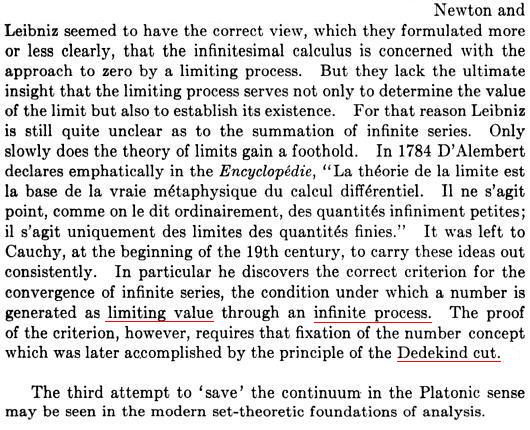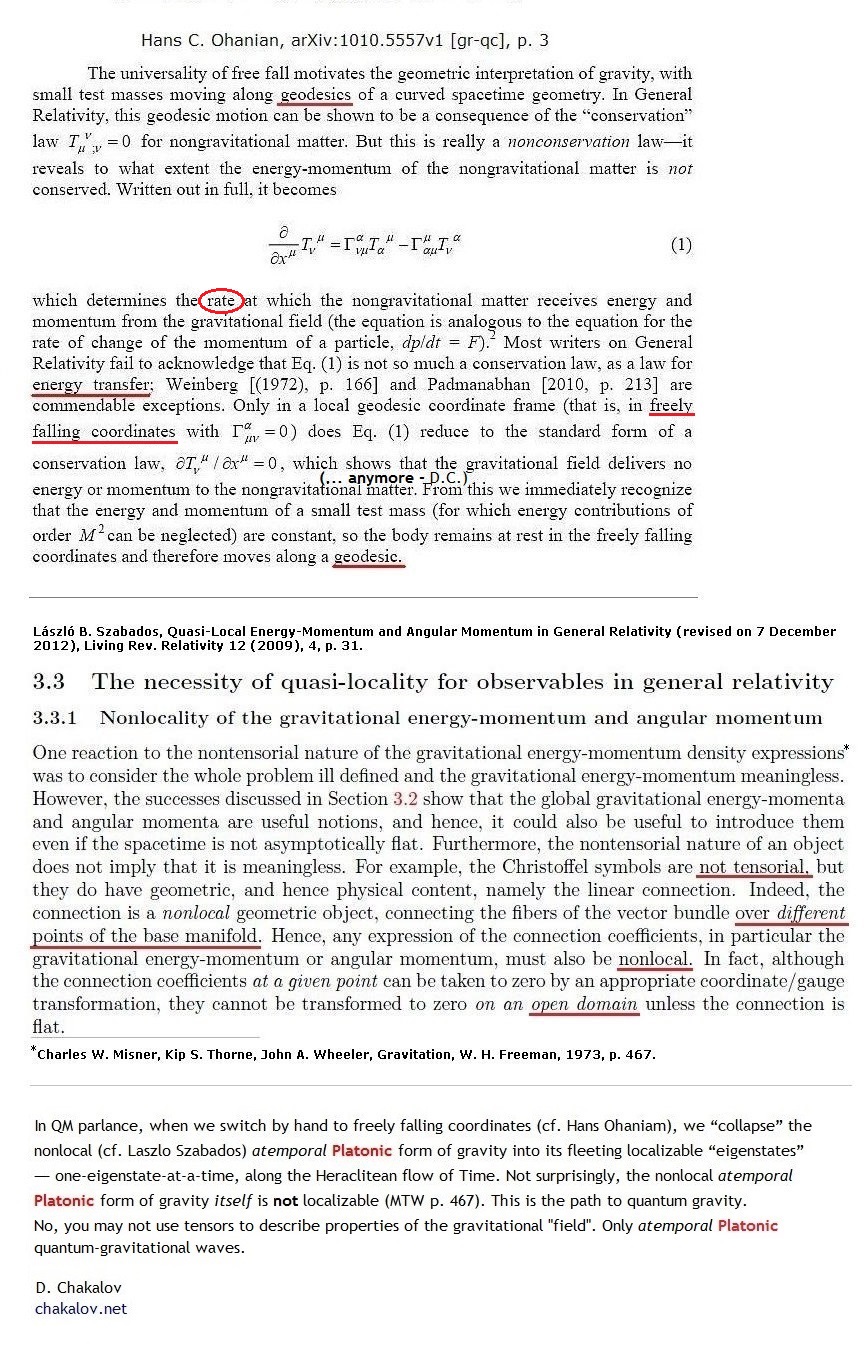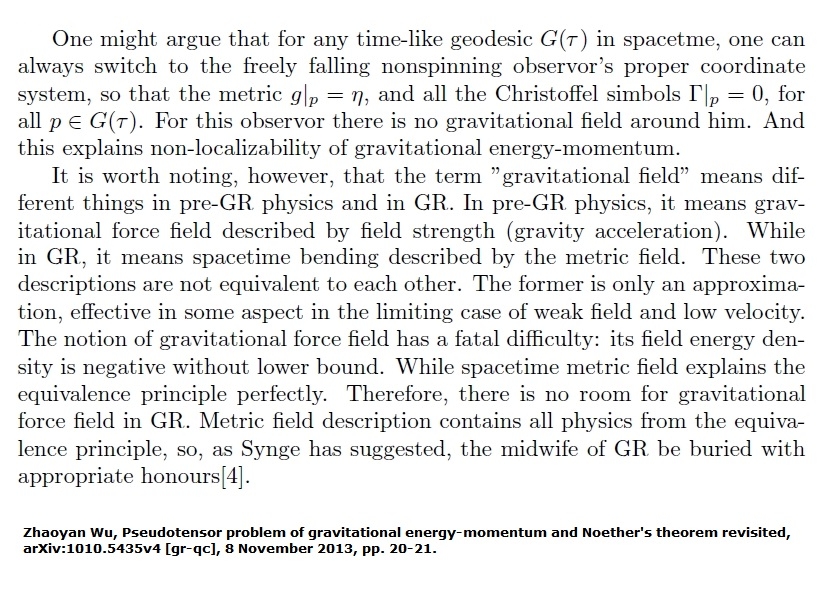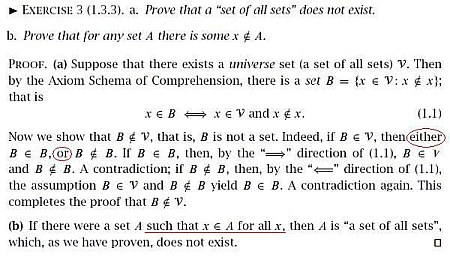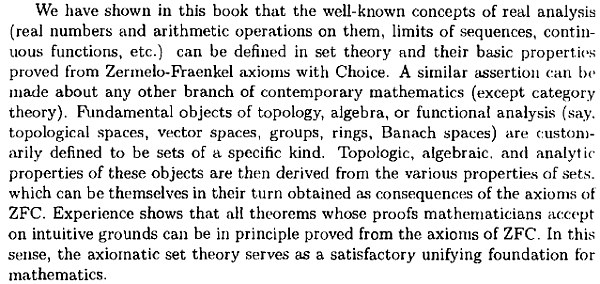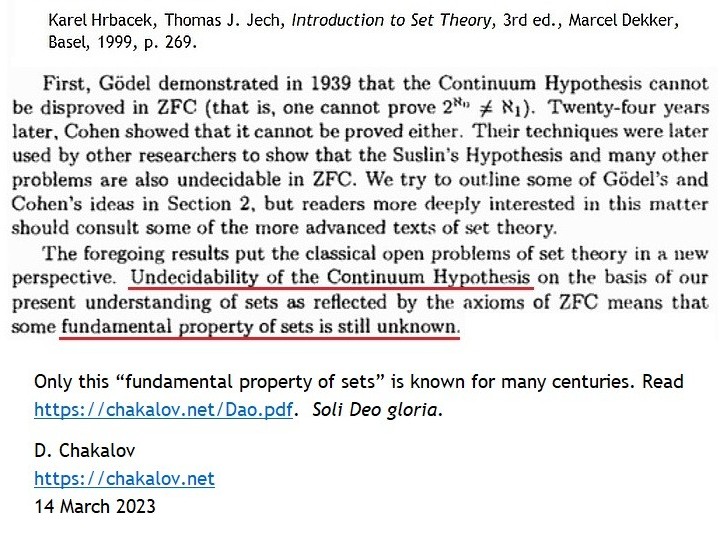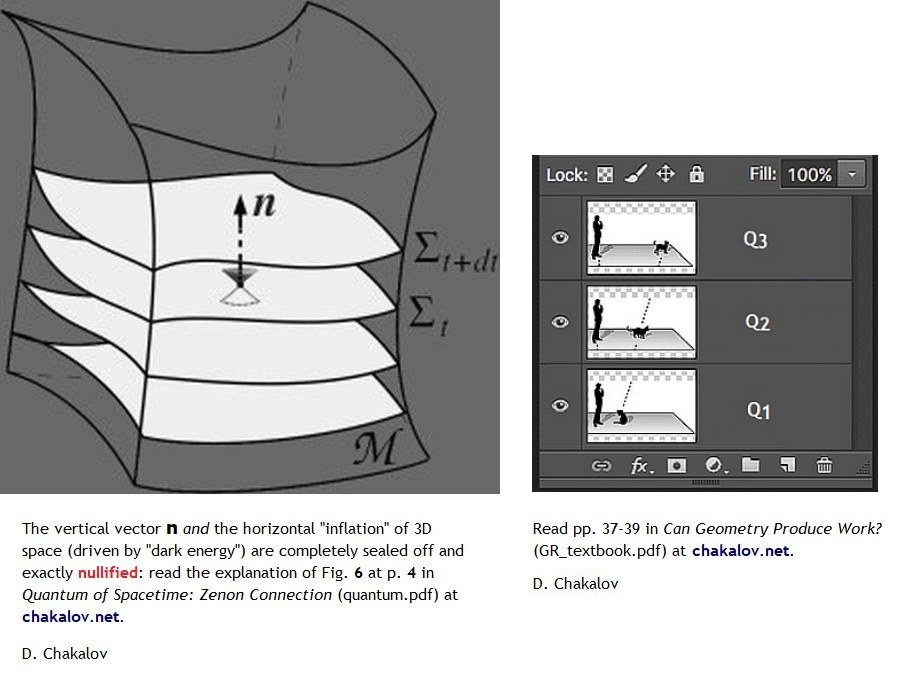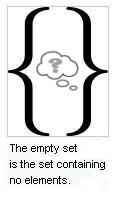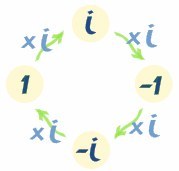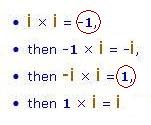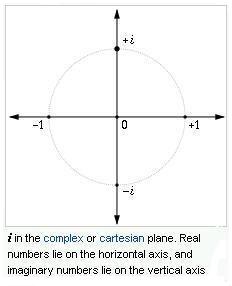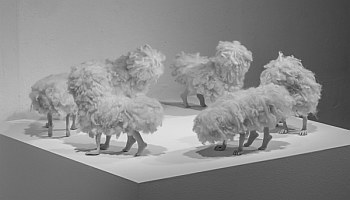|
----------------------------------------------------------------
'All right,' said the Cat;
and this time it vanished quite slowly, beginning with
Note: The
pre-quantum UNspeakable Kochen-Specker "state"
is indefinable as well, otherwise we may use only countable
sets. Such indefinable objects complement
'physical reality' or "jackets". The latter
are re-created "slices"
of asymptotically flat spacetimes (local modes of spacetime), in
which the total energy of the whole universe is indeed "conserved"
("a
grin without a cat!") at this instant 'now' from the
Arrow of Space -- one-conservation-at-a-time.
However, such "conservation" is totally
unacceptable approximation (like a 'spherical
cow'), because it pertains only to the so-called "evolution equations" (see below) confined entirely
within one dead frozen asymptotically
flat "slice" with fixed topology.
Hence a 4-D spacetime is being assembled by the Arrow of Space -- one-slice-at-a-time -- with curvature & torsion, along with inevitable "dark" effects and energy non-conservation observed only retrospectively in the assembled 4-D spacetime. With the current version of "classical" GR, the 'universe as ONE', placed in the postulated global mode of spacetime, generates indefinable (in the sense of Gödel's undecidable propositions) tasks, as argued above. It (not He) is the source of emergence of spacetime by countable sets of "jackets" (recall Plato), explicated into successive 3-D "slices" -- one-slice-at-a-time, along the null direction of the Arrow of Space. On the very boundary of such assembled 4-D spacetime, the topology and the metric are different, to allow for the binding of points by the postulated Aristotelian Connection in RS gravity: It is in fact ONE dual object with non-Archimedean geometry, which macroscopic observers describe as both infinitesimally "small" and infinitely "large". Once we discover the proper mathematical formalism of RS gravity, we should be able to explain the emergence of 'globally hyperbolic spacetime equipped with Lorentzian metric', instead of introducing such 'spherical cows' by hand, as if they were produced by some Biblical magic. Were it possible to determine the "boundary" of spacetime to obtain some self-sufficient and fully completed object, the latter will be inevitably self-destructive. Simple, no? KISS!
D. Chakalov
Yes, there are effects, resembling a swathe, due to 'tangible energy' (Hermann Bondi), but only in the assembled 4-D spacetime, which in turn requires brand new GW detectors endowed with self-action, just like the human brain (forget about LIGO, eLIGO, Virgo, and similar parapsychology). Nein, because every "slice" of local mode of spacetime is an asymptotically flat 3-D space, in which the contracted Bianchi identity holds FAPP, and we can effectively switch off gravity at a point (Hermann Weyl). Also, we cannot in principle detect the gravitational energy density at a classical geometrical point (MTW, p. 467), because it belongs to 'the universe as ONE', hence it is not classical phenomenon (i.e., 'objective reality out there', cf. Walter Wyss) but quantum phenomenon, just as we cannot detect the energy density stored in the quantum vacuum (John Baez, Case 4). It is just a "jacket" or "cloud", which every bartender knows very well (recall Plato), only in our case we need Quantum Geometry in which the "points" themselves possess quasi-local structure. By the same token, there is no curvature-and-torsion in any "slice" of local mode of spacetime. The latter is an asymptotically flat 3-D space with zero time (recall the 'empty set R'), yet in the assembled 4-D spacetime we experience their successive manifestation through time (cf. option (iii) YAIN above), in terms of gravitation-and-rotation (not curvature-and-torsion). Neither spacetime curvature nor torsion can be observed at a point -- they emerge as gravitation-and-rotation only in the assembled spacetime by Arrow of Space, and the original curvature-and-torsion must not be physically observable. Which is why the physical effects from gravitation-and-rotation cannot be traced back to their quantum-gravitational origin (called "it"), and if people try to interpreted them with the current "classical" GR, they will call them "dark", as I tried to explain in September 2011. Here's a simple visual explanation: every end-point x in the drawing below is an almost (Sic!) completed "slice" of asymptotically flat 3-D universe with zero time "vector" from the Arrow of Space, called 'local mode of spacetime'. The mass-energy content at every end-point x is almost (Sic!) "conserved" (cf. Nein above), which enables changes in the global mode of spacetime from the Arrow of Space. So, once we eliminate the "dark" gaps of global mode of spacetime to obtain the perfect continuum of the assembled 4-D spacetime by the Arrow of Space, people are struck by the non-unitary transitions along the creative evolution of these end-points x , and call their pure and potential quantum-gravitational source "dark", as I tried to explain in September 2011.
But of course. Just ignore everything you've learned here, and switch to "the worst theoretical prediction in the history of physics!" (Wiki), until you quietly and irreversibly retire.
"just
another crank" -----------
Addendum
The difference between the classical and quantum metrics is in the "location" of neighboring points along the w-axis: in the former case, the dt/ds transition is "between" points on a line (say, the trajectory of a Frisbee in Minkowski spacetime), while in quantum spacetime the neighboring points will look to us delocalized and smeared along a "quantum path", as in Feynman path integral. But the interpretation of "delocalized quantum dough" is again an artifact from imposing the classical, special-relativity metric on the quantum spacetime. In the quantum world 'out there', all points are equidistant, and the quantum metric there provides perfectly continuous transitions between all points (Sic!) from 'Die Bahn' above: see an explanation with requirement [10, 20] here and here. But because we impose the spacetime metric from the macroscopic world with the act of measurement, we see fictitious "quantum jumps" in Minkowski spacetime. There is a crucial difference between (i) how the quantum world will look to us through classical metric [Ref. 1], and (ii) how the quantum world exists 'out there'. In 1935, Erwin Schrödinger emphasized that measuring a value (e.g., "cloud") of an observable does not mean that the observable has had such definite physical value from the outset: quantum observables cannot in principle possess any definite value before we measure it. Therefore question (i) is about the inevitable artifacts from imposing the metric of Minkowski spacetime (classical "filter") on the quantum world, while question (ii) is about the phenomenon which can replace the act of 'measurement' in QM textbooks, and hence allow for the existence of an intact quantum world with potential physical values of all would-be observables, which in case (i) will be elevated (not just "amplified") at macroscopic length scale. Our answer to question (ii) is with the Arrow of Space. Regarding question (i), all points from 'Die Bahn', as viewed from a finite spacetime volume at the length scale of tables and chairs, will be interpreted as equidistant: there is no difference between quantum transitions from point 1 to point 2 and from point 1 to point 10 (cf. the drawing below).
Metaphorically, the atemporal assembling
of
one quantum path is like producing yarn from
raw wool.
See again case (ii) above and the most widely known public secret in theoretical physics here. In summary, all Points II, as observed in our ever-increasing past, have been "quantized" ab initio, and at all length scales. There are no "nonlocal" interactions in the quantum-gravitational world 'out there'. There are no CDM or DDE either, because these "dark" effects of gravity are nothing but macroscopic presentation of entanglement at length scales larger than the solar system. Instead of switching to unphysical "free fall" (Italo Cavino) to explain gravity [Ref. 2], try the principle of dynamic gravitational equilibrium.
D. Chakalov
"The complex amplitude to
be assigned to that particular history is then given by the deceptively
simple formula [XXX]. Part of the deception, in the simplicity of this
formula, lies in the fact that the 'amplitude' is not really a (complex)
number, here (which, as written, would have to have unit modulus), but
some kind of density. But here we have a continuous
infinity of classical alternatives. Our above 'amplitude' thus has to be
thought of as an 'amplitude density'. (...) But the bad news here
is that the 'space of classical paths' will almost certainly turn out to
be infinite-dimensional."
"The next question was - what makes planets go around the sun? At the time of Kepler some people answered this problem by saying that there were angels behind them beating their wings and pushing the planets around an orbit. As you will see, the answer is not very far from the truth. The only difference is that the angels sit in a different direction and their wings push inward."
The “error’’ ε
is not a point and cannot take any
number.
It is a peculiar running entity
The solution proposed here
is
to insert the dual “gap’’ ε in the non-Archimedean world
(dubbed potential
reality) in
Relative Scale gravity, which emerges in the potential future
of the Arrow of Space due to the phenomenon of
entanglement. This hypothetical non-Archimedean
world occupies a so-called 'global mode of spacetime', which Mother
Nature makes to resemble "zero"
-- an infinitesimal and
non-numerical entity, dt & ds,
which is always "running" in potential infinity, and
also has always completely disappeared in actual
infinity due to the "speed" of light.
Consider Cantor's definition of ‘set’ from 1895 (quoted after D. Giulini, arXiv:0802.4341v1, p. 11):
Can we unravel some pre-geometric plenum (resembling a school of fish), called here "it", which can replace "our intuition" and bootstrap all ‘elements’ into a whole? If we can, "it" must not belong to any set, but to 'the set of all sets', which makes such pseudo-set and its complement truly indefinable. Let's go back to the delta-epsilon conjecture. The verbal definition by Cauchy from 1821 involves at least three unwarranted presumptions: (i) "a fixed value" which can be approached "finally" by some (ii) running entity
( (iii) "as little as desired". The first presumption
looks "obvious", but it presupposes that the object we wish to prove
with "running" delta-epsilon limit -- a final fixed value --
exists 'out there' from the outset, which is a logical miss-match, to say
the least. Besides, the presumption implies Wheeler's "cloud"
and a fixed asymptotic boundary to verify the
positive mass conjecture, which are anything
but simple and clear. Presumptions (ii) and (iii) are tacitly based on
the Archimedean Axiom only, which, in
my opinion, makes them pure poetry. Notice that if the universe were
confined exclusively to Archimedean geometry, presumption (iii)
"as little as desired" signifies irrevocable alternatives: either
an increment or nothing, as stressed by Bishop Berkeley (quoted
after Judith Grabiner,
1983). For a general outlook on infinitesimals and how they
reconcile "either-or" complementary properties, see the 'empty set
R' and the drawing above. If at every step we double the number of sides of the two polygons, there exists an end-point or limit at which the two polygons disappear, being converted into one "perfectly smooth" circle: the length of the sides of the two polygons is now the indefinable 'empty set R', just as in the Thompson lamp. Surely the limit at which the two polygons snap to circle, as the "number" of their sides is presumably reaching infinity, is inevitable and cannot be surpassed. Can't go any further, because there is no "further" step allowed by "smaller/larger" in the purely geometric, non-Archimedean world of the continuum. But since we cannot verify the nature of infinitesimal points and how they approach infinity, to be fully liberated from any 'matter' (recall the grin of the Cheshire cat without the cat), two options remain to be examined: either these infinitesimal points conform to the Archimedean Axiom (to be explained below), or not (hinted above, after Georg Cantor). The first option may correspond to the idea of 'finite infinity' suggested by George F R Ellis in 1984, but because there is no way to verify these infinitesimal points, we may only claim that any finite chunk of space or time interval is made of so-called 'Archimedean points'. For example, we define 'one second' as made of exactly "9,192,631,770 periods of transition the radiation corresponding to the transition between the two hyperfine levels of the ground state of the cesium-133 atom" (Orfeu Bertolami). By extrapolation, we may claim that the Archimedean points are also finite entities, albeit many times "smaller". If so, we denote the number of such Archimedean points in one meter with x , and declare that the number of Archimedean points in a square with one meter side will be x2, and in a cube x3 . Then we could bring infinity "into a finite spacetime region" (Ted Newman et al.), and happily speculate that "more and more" space appears due to "dark energy" of [whatever]. Thanks to Georg Cantor, we know that this first option is untrue. And since we are dealing with uncountably infinite pseudo-set of non-Archimedean points, we can't make them "second countable" ("countable base" topology cannot recover all points "counted" with irrational numbers). We can't declare that "all manifolds are assumed to be Hausdorff, second countable and C∞, and all fields are assumed to be C∞" (Lars Andersson) either. Same holds for the speculations of Roger Penrose. Yet contemporary textbooks (see Chris Isham) use exclusively the Archimedean Axiom, and try to bypass -- not solve -- the definition of limit (e.g., one meter) by replacing 'the running guys' in the drawings below with two indefinable running "numbers", ε and δ , such that, no matter how small ε can be, it is not zero, and "therefore" will always chase a smaller δ , ad infinitum.
Why? Because every
finite volume of space contains the same "number" of
non-Archimedean
points: uncountably infinite, like
the set of all rational and irrational numbers.
Therefore, the "number" of
non-Archimedean
points is always 'the
same', regardless of the size of an object defined with spacetime
metric (see RS gravity). That is, the "number" on purely geometric non-Archimedean
points in one
picometer and in the Milky Way is always one and the same,
due to the nature of 'potential infinity' and the discovery of
Georg Cantor. NB: The separation
"between" points from open and closed intervals is made by the
Arrow of Space: open
intervals are always kept in the potential future, while we can
physically observe only closed intervals, and only
post factum. Physically, the
separation ε is
compactified on one point only, and since the separation is along
null directions, there is no physical time
there. Hence the accumulation of these "separations" by the Arrow
of Space produces a perfect continuum (Georg Cantor)
of points, in which the "separator" ε
is the instant 'now'. The latter cannot exist in the already-accumulated,
post factum observable
past.
Those who consider themselves 'transfinitists' believe that the notion of 'limit value' (i) exists and (ii) is actually reached (see the completed circle above), while other people believe, after Aristotle, that the process of division can never ever come to an end-point, and the limit value is never actually reached due to 'potential infinity', although the division can be continued indefinitely. The resolution of these seeming "alternative" options is YAIN (Yes-And-neIN): the "separator" ε is the dual instant 'now' in the Arrow of Space. With open sets, we have no choice but YAIN. Again, the only possible solution -- see again here -- is with a non-Archimedean 'empty set R', which pertains to the global mode of spacetime and can eliminate all "gaps" and errors ε : they are eliminated with the "speed" of light. And because the Arrow of Space does not permit two neighboring points to actually fuse, their separation with dt & ds is never actually zero due to the instant 'now'. If the Arrow of Space could somehow stop, all points will fuse into one unknown entity. Perhaps this was The Beginning "before" it began [John 1:1]. Thank God, the last question cannot be resolved with theorems, which would eliminate theology by mathematics. The path to God can show up only with mathematics, but the end result (if any) along such path must be indefinable.
Karel Hrbacek will most likely disagree, but since neither he nor
anyone else can rigorously define 'smoothness', will prefer to keep
quiet, while
Karel Kuchar will just keep quiet, as usual. Their problem has been swept
under the carpet with the recipes for 'nearness', 'convergence of a
sequence', and 'continuity
of a function' in the textbook by Chris Isham
above. The anonymous author(s) in
Wiki also used pure poetry: "except
possibly at c "
(emphasis mine), and tried to bridge the Archimedean gap with
"... f(x) becomes closer and closer to L as
x moves closer and closer to p" (source
here). They can only introduce a relation between the two running guys,
assuming they both can reach the spacetime boundary with
'potential infinity', just like
Chuck Norris.
If we shrink the radius r to match the 'empty set R' above, points O and C will commingle: r = 0. Bad idea -- we will end up with just one point to play with 'set theory', since all the rest will be fused with it. But what can happen if we draw a tangent line at C (it would match number 3 on your wristwatch, and the two signs for "infinity" would correspond to 12 and 6), and blow up the radius r to actually reach 'actual infinity'? I suppose the circle will break at 12 and 6, reduce its topology to a line (1-D Euclidean space), the radius will finally obtain end-points of infinite closed interval [O,C] at actual infinity, but will at the same instant disappear, and all points will fuse with the tangent line at C, which can now contain only one unknown entity. What can we do to define dt in the drawing above and reveal the "carrier" ? The non-standard analysis can't help. Any suggestions? If you have none, try the non-Archimedean world in RS gravity.
D. Chakalov
=========================================
Recall the Czech saying: The "devil" is encoded in the irrational numbers (Der Zahlenteufel). It is not a fixed number
but a running entity
Thus, we have fixed volumes of spacetime with Points II or "edges", called local (physical) mode of spacetime, in which the relations 'Large vs. Small', 'inside vs. outside', and 'one vs. many' are perfectly defined (observer A, see above). In the drawing below, the local mode of spacetime is depicted with re-created (by the Arrow of Space) four achronal hypersurfaces stacked along null "direction" and "separated" by dt/ds . The latter is not "zero", but is not some finite, additive, Archimedean element either. Only the so-called speed of light can 'take into account' Points II in the local mode of spacetime, hence produce objects with different and finite size and duration, as observed by A. But how? The puzzle goes back to Lucretius, some 2060 years ago. According to our metaphysical doctrine, Points II are assembled with actual infinity and at every instant 'now' are shifted irreversibly in our ever-increasing past, being individuated en bloc by matter (the Cheshire cat). Hence we may call Points II 'matter points', although they are not countable Archimedean entities with finite size, as in the "reproduction" of 'one second' in metrology. The initial, purely geometrical Point I has been set to "nothing", which is why some (otherwise smart) people call Point I "dark", as explained with Die Bahn metaphor from Werner Heisenberg. There is absolutely no flexibility in the perfect continuum of Points II: the elementary step of the Arrow of Space, dt/ds , is indeed non-existent there, and our ever-increasing past has been emerging (Isham and Butterfield) by invariant blocks of matter -- one invariant block per instant 'now' -- along null "directions", as depicted in the drawings below.
Hence in RS gravity we propose that the so-called speed of light is related to the assembling of Points II at every instant 'now' as invariant blocks of Points II, say, 'one meter'. These blocks are always invariant objects in GR, but the speed of light may assemble them in different ways (Sic!), to obtain the physical, 4-D spacetime (local mode of spacetime) from the achronal (with elementary "thickness" dt ) hypersurfaces above. Namely, the crucial difference is in the flow of time (denoted with F), which is hidden within dt/ds . Think of the flow of time (F) as the rate of which "fresh waters are ever flowing in upon you" ('You cannot step twice into the same river; for fresh waters are ever flowing in upon you', Heraclitus). Hence F signifies the crucial 'rate of time', in addition to the bare dt/ds . This is the essence of Relative Scale (RS) theory of gravity (RS gravity for short), and I will try to explain it here in the most concise way, stressing that the full mathematical theory is still missing. Think of F as something resembling 'speed of flowing time'. The bare dt is an invariant element -- an "intrinsic time interval associated to any timelike displacement", since "fundamental systems all march to the beat of the same drummer" (Ted Jacobson, pp. 18-19). But the "drummer" may beat/tick differently (Sic!), resulting in different 'speed of flowing time F' for observer(s) B, compared to A. To explain the idea,
suppose we have two clocks with different values of F; one is
macroscopic and belongs to observer A,
and reads 'one second per second', while the clock of observer
B in the Small is slower and
has ten times smaller value of F, compared to that
of observer A. Hence for 'one
second' read by the clock of
observer A the slower clock
of observer B in the Small will
trespass 0.1s (highlighted with red in Fig. 3 below) from 'one second' of observer A.
No physical clock can reproduce 'one second' (Fig. 3) from additive, Archimedean elements, even if the latter were veeery small and "exact", as suggested in metrology. Thus, the finite building blocks of spacetime, 'one second' and 'one meter', are potential gravitational reality: GR invariants. Notice that 'time' is not made of temporal and additive, Archimedean elements, to explain the flow of time and answer the question “How fast does time pass?” (Paul Davis). For easier understanding, think of observer A as an object with speed 1m/s, while the slower object B has speed 0.1m/s. Thus, for the same 'one second' (Fig. 3) of object A, the slower object B will trespass 0.1m, and will look smaller. To whom? Only to observer A, according to RS gravity. NB: Observer B in the Small will take its relative value of F, which will inflate (Sic!) its relative 'proper time' in the Small -- again 1s, but with respect to observer B -- and, given the constant speed of light, its relative size (R) in the Small will be enlarged accordingly. With respect to observer B, the space in the Small is again assembled from 'something else', but with a "smaller" value of F, compared to that of observer A. Yet such "smaller" value of F in the Small will be compensated by enlarged and relative (to observer B) value of R in the Small, in line with our postulated equation
1. The "distortions" of the values of F of observer(s) B in the Small and in the Large are relevant ONLY to observer A, yet with respect to observer(s) B at the same time there are no distortions whatsoever in the Small and in the Large, because their relative metric is compensated by reciprocal values of R, in line with Eq. 1. Hence at all length scales the invariant 'one meter' remains 'the same', along with the relative rate of time 'one second per second'. 2. The "number" of elementary 'ticks of time', which assemble Points II according to Rule (1), is uncountably infinite, which is why the "number" of Points II, occupied by a proton, a football, and a galaxy, is always 'the same'. Hence the Universe can be self-correlated and bootstrapped by the atemporal negotiation of its potential quantum-gravitational reality "during" the instant 'now' placed at Point I. For example, if F (cf. the drawing below) takes value 10-15
with respect to observer A, the
latter will conclude that the space in the Small has "shrunk".
Stated differently, observer A will
wrongly assume that her macroscopic value of F does
not (wrong!) change in the Small, and therefore the assembled distance
were 10-15 times smaller, and will match the "smaller" size
of a proton (Fig. 4).
But for observer B in the Small, his relative assembled distance will remain 'the same': the relative value of R in the Small will be 1015, because the size of a proton in the Small will be assembled with the same constant speed of light for longer (Sic!) proper time for trespassing 'one meter'. The fact that the "speed"
of light has a finite numerical value requires that F is bounded from
below by some finite numerical value as well, which at
the current stage of the evolution of the universe is the Planck
length, which is again 'one meter' (F = 10-35, R = 1035):
the universe does have finite size -- one-at-a-time -- but only in its
irreversible past.
In brief, all Points II take different values along F (with reciprocal values along R): For
BSmall : F (0, 1). What follows is a very brief example for case BSmall, denoted for easy writing with B. A
: F=R=1 => FA = RA = 3.108
m => 1s for the speed of light pertaining to observer A,
cA. Explanation: cB
shows the slowing rate of time in the Small (B),
but only with respect to observer A.
For observer B, his cB is
always 'the same constant speed of light', and his time would be
"slowing" only with respect to observer A.
Hence he (observer B) cannot
notice that it takes 10x longer time in the Small
(compared to observer A) to trespass
0.1s pertaining to observer A
(cf. Fig. 3 above): the elapsed time will be 1s for observer B.
Hence 'one meter' and any other finite distance (e.g., 3.108 m) will
be scale invariant. Namely, every
finite 4-D spacetime interval, as assembled by the Arrow of
Space (Sic!), will
remain 'the same' to all observers and at all length scales. This is the key issue in
RS gravity. With respect to observer
A, her
invariant 'one meter' can include many smaller elements, such as
the size of a proton, but the latter equals the same
invariant 'one meter' for observer
B in the Small, because it has been
inflated there by greater R. Likewise, the
invariant 'one meter' for observer
A will be many times smaller than a
galaxy, yet the same invariant
'one meter' will be shrunk in the Large by smaller R, and will again determine one
and the same and invariant 'one
meter' there. Hence observer A
can claim that she is "between" the Small and the Large, and the
latter are "penetrating" each other, starting from
A. In fact, we just happened to be observers
A, because mind and consciousness
can enter the physical world only at macroscopic scale (cf. Q3
above), while the invariant 'one meter' pertains to
all observers, at all length scales, thanks to Eq. 1 above and
'the same' uncountably infinite points for all values of R.
Of course, it would be far more useful if we can manipulate the metric locally and blend the effects predicted in RS gravity, say, to fly like an Alien Visiting Craft (AVC): our 'one meter' will correspond to 1000 or more meters in the reference frame of outside observers. Whose meter is "correct"? Both. Needless to say, I still don't know how to "produce the gravity differential, the time field differentials" (Wilbur B. Smith) which are necessary to operate an AVC. Its inertial reaction "forces" should be eliminated (REIM) in the first place, to make it fly in "empty space" by "free fall" (cf. Fig. 1 above). Tough. But since we [Ref. 1] share the same brain with the Universe, the task might be feasible. I will have to leave the remaining issues of Point I and Points II open, and go back to the emergence of Points II. I stated above that the description of 'points' in differential geometry and topology requires a resolution greater than the points themselves. That is, we need to show the indefinable entity from which a point can presumably emerge (Isham and Butterfield). Here the example from Karel Hrbacek is very helpful:
If we apply the
Golden Ratio, c is an irrational running entity
If we apply the Dedekind Schnitt (cut) to the irrational, yet uniquely defined, point c for torus (A) and sphere (B) transformations, A(|)B (Richard Dedekind), we obtain at actual infinity (global mode of spacetime) one and only one point c which pertains to 'infinite space', and produces the "severing" of the straight line r into two portions "separated" by a purely geometric (modulo the Cheshire cat) point C :
The small red circle
contains point C (omitted;
see it above), and corresponds to
This is the emergence of asymptotically flat spacetime (called 'slice' and 'flash') in which the 'world points' are already individuated by matter (the Cheshire cat), and belong to the local (physical) mode of spacetime -- one-flash-at-a-time along the Arrow of Space. Physically, we observe a sequence of points c 'now', which assemble the perfect continuum of the local mode of spacetime: The Aristotelian Connection. The latter involves two offer-and-confirmation "waves" of spacetime topology, which "run" against each other in the global mode, and create asymptotically flat spacetime (local mode): one-slice-at-a-time along the Arrow of Space.
Yes, we certainly can obtain a frozen "jacket" at c (called also 'slice' and 'flash') with actual infinity, but -- no, not by catching the running c itself. Hence we are dealing with uncountably infinite pseudo-set of points from 'open sets' with the indefinable cardinality of rational & irrational numbers. Let's see how this story fits in the (ε, δ)-"definition" of limit:
The exact numerical value of the referential point x does not matter, because it disappears anyway, yet it must be precise to define the two intervals. It is the ultimate "source" from which the flash-points emerge in the local mode of spacetime, by "collapsing" the two intervals to zero, after which c and x become identical at the instant 'now', as every bartender knows very well; more here. Let's see how the referential point x defines the beginning of cosmological time (hence spacetime) or Time Zero. To paraphrase Wiki:
If we run this cosmological non-unitary evolution backward in time, 'the universe as a brain' will be losing its physical content by non-unitary transformations, and by approaching asymptotically Time Zero it will become just very simple, resembling your prenatal Stage 1, Zygote.
No need to worry "why the very early universe was in a very low entropy state" nor to suggest that "it came into existence in a very special state. Of course, this answer begs the question, since one would then want to know why it came into existence in a very special state, i.e., what principle or law governed its creation. I definitely do not have an answer to this question" (Robert Wald). Now you have the
answer. There is no alternative solution. None. To explain what
is alternative solution and why it can't work, suppose the
atemporal loop 'now'
were wrong. As a toy model for "unitary evolution", measured with "time"
and denoted with t in your GR
textbooks, consider a
kaleidoscope with a finite number (e.g., 1044) of
colored pieces of glass, which is shaken "in the air" and then placed on
a table -- once-at-a-time. You aren't interested in the ("dark") states
of the kaleidoscope "in the air", but only in its physically
observable states 'on the table'. You claim that these states change due
to
thermodynamics, hence exhibit 'time as read
with a physical clock', and require the
global hyperbolicity conjecture. All possible (i.e., countable in
principle) states of the kaleidoscope 'on the table' form a set,
and you happily invoke "the axiom of choice" to "arbitrarily pick any
member" (Eric
Schechter) of this set, and attach certain probability for observing
it 'on the table', assuming that all probabilities will sum up to unity,
to provide "unitary evolution". All this may sound nice 'n clear, until
you realize that (i) one cannot affirm nor reject the Continuum
Hypothesis for such observable states, and (ii) there is too much "dark"
untraceable stuff that
somehow shows up
'on the table': if interpreted as
an effect due to matter, the radius of the
universe “could not even reach to the moon” (Wolfgang
Pauli). In this respect, Kurt Gödel was immensely lucky to demonstrate that the Continuum Hypothesis is neither provable nor disprovable. All the mathematics was already unraveled, and he was lucky to meet the great David Hilbert, who immediately dropped his own project. Why? Simply because David Hilbert had respect for Mathematics and considered it superior to his ideas. I didn't have such luck so far, and am still trying to find the right people. Qui vivra verra.
====================================================
Subject: Phase difference
of matter waves: Request for reference (if any)
Note: If we extend
the quasi-local action-at-a-distance [Ref.
1] to quantum and gravitational interactions, the fleeting material
content (flashes) at the instant 'now'
may look like
Schaumkamm
("eine Art "Schaumkamm" auf einer den Weltgrund bildenden
Wellenstrahlung," Ref. 2) explicated from the global mode of spacetime --
one-at-a-time along the Arrow of Space, and with unit
probability. The resulting re-created
local (physical) mode of spacetime is an
exact limit for the whole
universe, but is valid only for its current instant 'now'. Hence
we don't need the 'reference fluid' (Brown and
Kuchar) at this particular Schaumkamm 'now'. Also,
the "negative energy" (Adam Helfer) has
been perfectly cancelled out, leaving an EPR-like correlated
physical world endowed with "inertia".
The atemporal 'offer and confirmation' standing wave pertains to
the potential reality of 'the universe as ONE',
hence only the (human) brain may have access to its
imaginary phase, to tweak and alter the next "flash"
or Schaumkamm permitted by the conditions for
flexibility (not "uncertainty"). The list of possible applications is
very long, but I will stop here, because nobody's interested -- nobody
showed even a trace of interest in the new form of retarded causality,
called 'biocausality'. It was introduced in
January 1990 as
'just a hypothesis', and now is 'the only possible solution'.
Why? Let's introduce a
structure of the instant 'now' with two purely geometrical
(modulo the Cheshire cat) points A and B,
which belong to the global mode of spacetime in
RS gravity, and fix (Sic!) the Schaumkamm
'now':
The atemporal loop 'now' in the second drawing occurs in a hypothetical global mode of spacetime, which contains only the atemporal 'universe as ONE' depicted with Point I. Physically, it would be seen with an inanimate clock (not the human brain) as a timeless luxonic world [Ref. 4]. The latter "separates" the physical, 4-D spacetime from a mirror world of imaginary mass [Ref. 5] shown with 1+3-D spacetime [Ref. 4]. Such mirror world keeps the potential states of matter, and with respect to the physical spacetime will resemble a rubber hand glove (cf. the circle in Fig. 5.7 below) turned inside-out, with opposite parity and inverted dimensionality.
The broken symmetry of mirrored spacetimes, observed in the physical world with Points II, is due to the Arrow of Space : the physical 4-D world is re-created at every Schaumkamm 'now' as a set of Points II, in which the atemporal loop 'now' has been already-completed, and the imaginary mass in the global mode of spacetime will be interpreted as a neutral plasma of negative-positive mass pairs (Belletête and Paranjape, pp. 6-7). As Gerald Feinberg stated, "It is clear that at a single point there is no distinction between absorption of a positive-energy particle and emission of a negative-energy (Macavity - D.C.) particle" [Ref. 5, p. 1091].Notice again that, unlike Wheeler-Feynman absorber theory, we assume different, inverted spacetimes for the physical and mirror worlds, which "interact" only at one point 'now' by a standing offer/confirmation topological wave in the global mode of spacetime, shown in the atemporal loop 'now' above with Point I. Also, the atemporal loop induces rotation in the local (physical) mode of spacetime, made with Points II, as the offer wave is confirmed by 'the rest of the universe' in just one instant 'now' of "clapping hands". In such Machian model the two "waves" negotiate the energy-momentum content of every next instant 'now', as points A and B will be again fused into the next instant 'now' from the spacetime continuum of the local (physical) mode of spacetime. This bundle of issues requires detailed mathematical study in the future. NB: Notice that the "confirmation" wave from 'the rest of the universe' in the atemporal loop 'now' is not time-symmetric but pertains to the flow of time in the Arrow of Space. The crucial input from B is not includable in a Green's type function -- it describes "the transfer between the intangible (yet-to-be physicalized - D.C.) energy of the gravitational field (as it will be called here), which is not described by the energy-momentum tensor, and the tangible forms which are so described" (Hermann Bondi), and is a genuine non-conservation law (Hans Ohanian). Otherwise the universe cannot shift to its next instant 'now': there will be no 'change of space' along the Arrow of Space, but only 'change within space' and the universe (included your brain) will be timeless (Robert Geroch). Thus, the elementary increment of
time, AB = dt , is an "interval" in which the two
purely geometrical points 'run toward each
other', as they are separated by the "error" ε (Cauchy).
With Archimedean geometry only, we have two incompatible options
which 'transfinitists' try to reconcile: either zero or finite, as
Bishop Berkeley stressed. My solution is
YAIN,
and I won't repeat it here. Suffice it to say that the set theory, as
presented in the textbook by Karel Hrbacek, must be
upgraded to correctly model the continuum
hypothesis.
According to the observer and his Diff(M)-invariant wristwatch, the cat moves only (wrong!) in the assembled (cf. option Yes above) 4-D Archimedean spacetime by changing its coordinates. But the assembled 4-D spacetime is made by the Arrow of Space with achronal 3-D hypersurfaces in which the "orthogonal" input is made infinitesimal along w-axis (cf. Fig. 1 above), and the "displacement" dt/ds is approaching zero. Physically, the observers cannot detect the irreversible flow of time along the additional global "orthogonal" w-displacement from the Arrow of Space, and believe they live in some dead frozen "block universe" equipped only with thermodynamics. The fundamental difference between 'change in space' and 'change in time' is postulated (not explained) with spacetime metric from the outset, and all efforts in GR (e.g., Peter Bergmann) to endow the metric with dynamics (with respect to what?) tacitly presuppose that the dynamics of GR occurs only by coordinate change in the assembled 4-D Archimedean spacetime (cf. option Yes above). But this "change" is a local (in fact, quasi-local) phenomenon, and pertains only to the necessary conditions. The sufficient conditions, on the other hand, are defined from the atemporal 'universe as ONE' depicted with Point I -- the "engine" of the atemporal loop above is the Aristotelian Unmoved Mover (Karel Kuchar). Both conditions, necessary and sufficient, are needed to make the metric dynamical: Mass there governs spacetime geometry here (Ciufolini and Wheeler, p. 270), and at the same instant spacetime geometry here governs mass there. Thus, the instant 'now' has internal structure, to accommodate the atemporal, bi-directional, and non-linear "talk" (depicted below with the 'drawing hands' from Maurits Escher) along the w-axis, between every 'point' and 'the rest of points'.
Metaphorically, what we see in a cinema theatre are the
running images
from achronal static slides in a movie
reel, which fully comply with the laws of
thermodynamics.
We don't see the dark strips (ds/dt) separating the achronal snapshots in the movie reel, nor the global engine which runs the movie. Hence at every instant 'now' we pass through God (Luke 17:21): a genuine Noumenon (Kantian das Ding an sich - never in plural), presented with 'the set of all sets'. Isn't it simple? In fact, I am trying to help Karel Hrbacek and Karel Kuchar, and recently offered them and their colleagues to read my proposal, in PDF format, and write a brief paper. They all refused, and will continue to teach their students an incomprehensible mixture of things that are clearly correct, unclear, horribly misleading, and outright wrong. But soon or later, they all will irreversibly retire.
D. Chakalov
===================================================
Hermann Weyl,
Philosophy of Mathematics and Natural Science,
----------------------------------
Note: One hundred years ago, Marcel Grossmann [Ref. 1] suggested that "the divergence of the (contravariant) stress-energy tensor of the material flow or of the physical process vanishes." YAIN.
The crucial input from the
Weyl Tensor is yet to
be understood. D. Chakalov
==============================================================
Subject:
arXiv:1010.5435v1, 26 October 2010 But please let me first
see your answer.
Note: Suppose you are sitting on a chair at your kitchen table, and drink your morning coffee. Suppose also you are "at rest in the freely falling coordinates", and your coffee is very cold. But if you stand up and move your coffee to the fridge, your (otherwise "nongravitating") coffee will be very hot, after the transfer of "dark" kinetic energy from gravity (cf. non_conservation.jpg above). But then you sit back on your chair, and the same coffee suddenly turns out to be very cold, which is supposed to explain the "non-localizability of gravitational energy-momentum" (cf. Wu_p20.jpg): once you move back in your "free falling elevator" (chair), you will feel no energy contributions from gravity, and can safely ignore that 96% "dark" stuff in the universe, which makes your coffee very hot. But in fact, you can't find any place to ignore the "dark" stuff, because it always smuggles quietly in your coffee: "the geodesic equation is capable of encoding the effect of external gravitational field on a material particle and - in general - will not lead to any conservation law" (Padmanabhan, p. 213). Namely, once the gravitational energy-momentum quietly smuggles in your coffee, it suddenly becomes perfectly localized, no matter if it gives to, or takes away energy from your coffee. Nice story, eh? Tell it to the Marines and you may get a Nobel Prize. Seriously, the localization of gravitational energy-momentum is quantum-gravitational phenomenon (cf. YAIN above), because its one-at-a-time localization requires the Arrow of Space, so if you look at it only in the already-assembled, local mode of spacetime, its source will be "dark". On the one hand, the claim that "gravitational field (I’d rather call it metric field) is different to matter fields. It shouldn’t carry energy" (Wu, p. 14) is indeed correct: see option Nein above. On the other, if you examine only the already-assembled, local mode of spacetime, the opposite claim is also correct: see option Yes above. We simply need new Mathematics to reconcile two seemingly incompatible options: (i) curvature of spacetime is an invariant which cannot vanish by any choice of coordinates, and (ii) curvature of spacetime is an invariant which must vanish by choice of freely falling coordinates. How? Only with two modes of spacetime, global and local, which pertain to two ontologically different presentations of gravity: see again YAIN above. NB: The very source of gravity is potential reality, while its localized "flashes" are just physicalized (Sic!) energy which either gives to, or takes away 'tangible energy' (Hermann Bondi) from your coffee (r.h.s. of Einstein's field equations). If the source of gravity was some physical field (e.g., resembling electromagnetism), its "flashes" would be localizable (MTW, p. 467) in line with Newton's third law, and the inertial mass of an accelerating particle would be a simple "back-reaction to its own gravitational field" (Rindler, p. 22). No, gravity is not "classical field". Matter is self-coupled by its own gravity. Gravity is a bootstrapping phenomenon producing a holistic "school of fish" in which every "fish" (or 'cup of coffee') follows its own quasi-local geodesic. Metaphorically, the school of fish tells every fish where to move in its next instant 'now' by exerting physicalized energy-momentum into its next state, while at the same instant (Sic!) every fish determines the next global state of the whole school of fish. This non-linear negotiation is the crux of gravity, and requires 'necessary and sufficient conditions for spacetime' (Chakalov, 21.09.2008). Due to the "speed" of light, we can observe (local mode of spacetime) only the end result from this bi-directional negotiation, which has been already-completed in the global mode of spacetime, between every quasi-individual fish and the whole school of fish, which is why we cannot witness the genuine dynamics of gravity 'as it happens', and the end result looks like a dead frozen universe (Geroch, pp. 20-21), resembling Escher's 'drawing hands'.
By using fictitious flat background spacetime, one can immediately define energy conservation in classical electromagnetism (Cooperstock and Dupré, p. 3). We can't make such miracles in GR (Curiel, pp. 1-4). In MST, the limit at which we obtain the circumference of a circle is a special red point which cannot and must not be traceable. Instead, we see only blue points there, as defined by the necessary and sufficient conditions for spacetime. Simple, no? But you can't win Nobel Prize for quantum gravity, firstly because you'll need new Mathematics.
==============================================================
Adapted from Plato, The Republic,
X.596a6, translated by
Allan Bloom
Subject: Platonic ideas:
The set of all sets Note: The so-called 'axiom schema of comprehension' claims that 'all the things with some property form a set' (reference here). Sounds simple and clear, yet 'the set of all sets' and its complement, known as 'the empty set' (it is both open and closed), are notoriously difficult to explain. I will argue that 'the set of all sets' corresponds to Plato's Idea or Form, and that it does not belong to any set but to the non-Archimedean world of 'the universe as ONE' (global mode of spacetime), as depicted in the atemporal loop above. Let me quote from Jianfei Shen, Introduction to Set Theory: A Solution Manual for Hrbacek and Jech (October 14, 2011), stressing the usual, and seemingly "obvious", either/or logic:
Suppose Karel Hrbacek was an Eskimo who has never seen an elephant in his life. Yet he can make observations on elephant's trunk by two complementary devices, which measure either properties of 'nose' or properties of 'arm'. Obviously, he can never understand the underlying 'ONE entity', called 'trunk'. Worse, he may be tempted to seek some causal relation between the 'nose' and the 'arm' only, and waste his whole life with questions like 'which goes first, and how'. Our case looks simpler, because we must only explain 'the ONE' (called by Plato Form), which is explicated by infinitely many sets, yet does not belong to any set, being 'the set of all sets'. To do this exercise, check out 'the UNdefinable matrix': given the inverse-proportional relation between the content and volume of concepts, the bigger the volume, the smaller the content. A comparison between, say, 'chair' and 'furniture' shows that 'chair' has smaller volume (distinguishable objects, identifiable as 'chairs') and larger content (less abstract) than the concept of 'furniture'. Namely, the set of 'chairs' has the set-forming property 'something you can sit on', which defines its content 'as a whole', and is an invariant property of all members of this set, regardless of their individual properties which identify the elements of this set as 'distinguishable objects' (e.g., specific design, shape, etc.). Hence the invariant property of the set 'furniture' has larger volume, in the sense that it contains the sets of 'chairs', 'tables', 'wardrobes', etc., as sub-sets, and smaller (more abstract) content defined with the invariant property of all members of the set 'furniture', and with respect to 'not-furniture' (we can understand A only with respect to not-A). NB: Is there a limit on the inverse-proportional relation between 'volume' and 'content' of sets? A very general and abstract set-forming property, such as 'things which exist', covers almost everything we could think of, and has almost zero intrinsic content, defined with respect to 'things which do not exist'. The limit of this trend is some UNspeakable concept that has infinite volume and zero intrinsic content. It covers all possible concepts, and is presented with the pseudo-set of all sets. It is also UNspeakable, because it does not require any referential object, hence cannot be defined with our relational thinking. The same untraceable limit applies to the Aristotelian Unmoved Mover and First Cause, which are "hidden" in dt&ds transition of the atemporal loop above, known as 'the instant now' (Luke 17:21). Yet it does exist, being the source of all 'shadows on Plato's cave', or 'the set of all sets' A such that x belongs to A for all x (cf. Jianfei Shen above). Or simply "a single essential nature or Form for every set of things" (Plato), which also has zero intrinsic content, and will look like an 'empty set' as well. And because we're "Eskimos", we can comprehend a set of things (A) with particular properties iff there exists a referential set of things with opposite properties (not-A). The underlying 'ONE entity' is a pseudo-set of all sets, and all propositions about such "trunk" are non-falsifiable and UNdecidable (Kurt Gödel). This is the price to pay for removing "contradictions" from either/or logic. It does exist and must exist, but is a Noumenon and can be demonstrated only with Mathematics. You may ask, 'but is this boring story really important?' Yes it is. If you skip it, you may waste many years in the jungle of set theory [Ref. 1, p. 283] and never understand the nature of continuum. The choice is yours.
D. Chakalov
========================================================
Subject: 'Something else':
FR = 1
D. Chakalov chakalov.net
------------- Note: Where is this
'something else' ? It is the dark "canvas" in the first
drawing below, which acts as "background" with respect to
which the so-called lapse function N is introduced, as
shown in the second drawing.
Notice that 'classical time' (Peter Bergmann) is inserted "between" achronal hypersurfaces, and the infamous 'problem of time' in canonical quantum gravity (Bryce de Witt) requires that the lapse N becomes dead zero. Hence you end up with one frozen achronal hypersurface only, which can take only one point, as ds is eliminated as well. In other words, the introduction of some global classical time, to "weld" all "leaves" together, kills the whole spacetime. This is the paradox (not "problem") of spacetime in canonical quantum gravity, which can be solved only and exclusively only with the atemporal loop 'now'. Notice that in RS gravity the stacking of achronal hypersurfaces along null hypersurface is the "end product" -- one-at-a-time -- of the Arrow of Space, obtained only in the irreversible past where the "separation" is approaching zero. The small black arrow in the first drawing above, n , is indeed located in the time-like section of Minkowski cone, but has an orthogonal component w from the Arrow of Space, which is approaching asymptotically zero in the irreversible past. This is the crucial difference between 'time as coordinate change in space' vs 'time as atemporal change of space'. And since the instant 'now' is dual object, the orthogonal, to the arrow n in the first drawing, component w takes values in the open interval (0, ∞) pertaining to the potential future: see the entanglement of space, Espace, above. So in the case of gravitational systems not larger than the solar system, we may use linearized gravity, since the value of Espace and the input from w will be vanishing small, but for objects with size of a galaxy the entanglement of space will produce "dark" effects (David Wittman), as explained above. Again, the direction w of the Arrow of Space is depicted with the "elevator" in Fig. 1 above. Its projection in 3-D space (local mode of spacetime) is omnidirectional, which is why we simply call it 'time'. It certainly "welds" all achronal "leaves" together as 'the instant now' -- one-at-a-time -- to produce an assembled continuum of Points II in space-like and time-like "directions", called 4-D spacetime (local mode of spacetime). We see matter only in the past state of such assembled spacetime, and cannot detect the Aristotelian Connection which will re-assemble the next achronal "flash" of Points II in the next instant 'now'. But people are unaware of this flow of time and would run the time-symmetric "arrow" n (cf. the first drawing above) backwards, to find the history of the universe and trace back the origin of gravitational anomalies, only it's just not there. The fictitious axis of electron spin (you have to rotate a spin not by 360 degrees but by 720 degrees to get back to exactly the initial state you started with) and the axis of global rotation (the latter induces total net spin of galaxies) are due to the same kind of errors -- there is no need for any "dark axis" either. It's just not there. It may be difficult to understand the emerging of spacetime from 'something else' (C.J. Isham and J. Butterfield), but you don't have any choice. None.
D. Chakalov
Lawrence Krauss (32:58 -
32:59): "But I would argue that nothing is a
Note: Regarding the
imaginary
number, let me quote from MathWorld [Ref. 1]:
Notice that (-m) and (+m) are interpreted as a neutral plasma of negative-positive mass pairs (Belletête and Paranjape, pp. 6-7), denoted in the examples above with (-/+3) and |3|. Thus, the Noumenon or 'zero nothing' is denoted here with 0i :
It seems Eq. 2 bears some similarity with the moduli of quantum waves amplitudes in the Born rule. The conversion of imaginary amplitudes in the loop 'now' to Points II is still unknown, however. Click the drawings below for more.
Should you have questions, please don't hesitate to contact me by email. Bear in mind that the new mathematical object 'zero nothing', denoted with 0i in Eq. 2 above, is opposite to 'zero something' (e.g., the number of bananas in Larry's ears), and is made by extending the category 'not included' to its final (Sic!) limit: the so-called set of all sets is also 'not included'. Namely, a set {A} with zero cardinality ({ } or {zero something} such as 'no bananas') can exist iff there is a complementary relational set of 'everything else in the universe' {not-A} that also belongs to the category 'not included'. Likewise, a set with finite cardinality {A} from the category 'included' (e.g., a set of two bananas) can exist iff there is a complementary relational set of 'everything else in the universe' {not-A}, such that the combination of {A} and {not-A} form again the so-called set of all sets. Briefly, we introduce 'maximal set theory' [Ref. 2] with two axioms: a set {A} can exist iff the union {A} and {not-A} denotes the set of all sets. Then we extend {not-A} to the set of all sets, and the final limit of {A} is 'the perfect monad without windows' (Leibniz), also known as the Noumenon, denoted here with 0i . Thanks to Plato, we made all sets 'closed' (cf. the drawing below) and simply can't go further. Why? Because both 0i and its complementary 'set of all sets' are indefinable "it" (the red points in the drawing below), explained previously with 'John'.
Thus, the Noumenon 0i is the 'absolute empty set' which complements the set of all sets, and their union (Sic!) makes all sets 'closed' [Ref. 2]. It (not "He") cannot be exhausted with any 'open set' of objects ("flashes") in the r.h.s of Eq. 2 above, which are marked with blue in the drawing above, and fit in the categories [things we know], [things we know that we don't know], and [things we still don't know that we don't know]. The last category enables the creative evolution of the universe in the open future. Can we think about the Noumenon 0i ? Yes we can, because it (not "He") exists yet is not relational. It
is the
self-referential set
Only people who suffer from Zenophobia (the irrational fear of convergent sequences) will pretend that cannot understand the final limit denoted with C above, also known as the Noumenon.
D. Chakalov
Excerpt from Varol Akman: "The AFA universe can be depicted as in Figure 9, extending around the well-founded universe, because it includes the non-well-founded sets which are not covered by the latter."
===============================================
Subject: Truth in
mathematics: Absolute undecidability
Comment: What could be wrong with introducing Mathematics to God? Only people brainwashed with religion, both theism and anti-theism, will disapprove -- they will either keep silent or pretend that cannot understand it (cf. Q4 above). The limit (Sic!) is the invisible 'set of all sets' called Noumenon. Surely we can see two pints of beer but not 'the universe as ONE', yet both are real. Without God, there can be no finite element, such as 'one meter', to build Archimedean spacetime. God is not about religion. It is your free will choice to accept God in Mathematics or reject it. If you choose the latter, how did you obtain your free will in the first place? Was it somehow "encoded" in your DNA? Or maybe the Universe itself is endowed with free will? What a pity you cannot respond!
Physically, the "speed" of light makes AC look like "nothing", and the resulting continuum of Points II is perfect. Physically, the "direction" of stacking of Points II (Arrow of Space) is simultaneous in all directions, which is why we simply call it 'time'. No physical reference frame (see the animation from John Walker) is available to detect the atemporal Aristotelian Connection of Die Bahn (Werner Heisenberg). And because at every instant of observation all Points II have already (due to the "speed" of light) passed via Point I into our ever-increasing past, the fundamental binding phenomenon -- Point I and AC -- is not there. It is the source of the Universe (cf. 'zero nothing' in l.h.s. of Eq. 1 on p. 35 from ExplanatoryNote.pdf), and is residing at "absolute rest" (Luke 17:21). Thus, it is impossible in principle to derive the "final-and-initial" Point I and AC from Points II: both the asymptotic boundaries in the Large (B) and infinitesimal points in the Small (B) are indefinable. See again the explanations with states of kaleidoscope here and here. If Point I and AC were physical points and hence 'GR observables' (Peter Bergmann), we would be able to detect dt/ds in spacetime, the "aether" will be exposed to physical observations, the theory of relativity will be wrong, and the Cauchy error and Dedekind Schnitt C will be mathematically verifiable up to their final (Sic!) endpoint, after which the lapse/shift dt/ds will be exactly zero, which will kill the whole spacetime, as in the paradox of spacetime in canonical quantum gravity. Metaphorically, the Arrow of Space is depicted with the Dragon chasing its tail (Ouroboros); the enclosed words mean 'The All is ONE.'
Why Arrow of Space? Because of the creative evolution of our universe: it is both irreversibly fixed in its ever-growing past and indefinable and flexible -- not "uncertain" -- in its future.
|
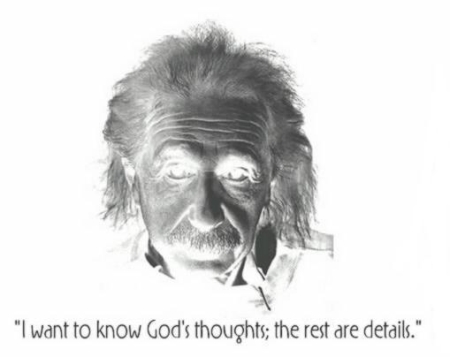
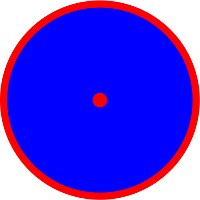
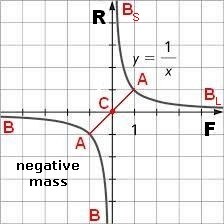
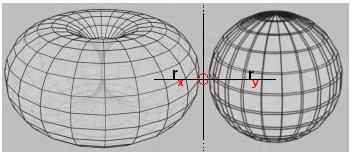
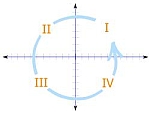



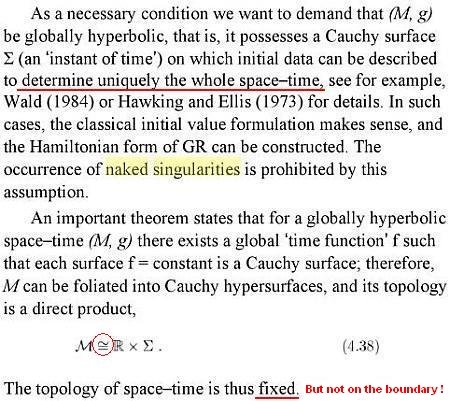

 Of course the problem is "relevant". See above.
Of course the problem is "relevant". See above.